Share
Photo Philanthropy goes to the dogs… and cats
According to statistics from The Humane Society of The United States, 6-8 million animals are relinquished to shelters in The United States each ye...
According to statistics from The Humane Society of The United States, 6-8 million animals are relinquished to shelters in The United States each year, with over 3 million of those being euthanized.
These are staggering and heart wrenching numbers, that can make you feel that short of running to your local shelter and adopting every sad-eyed pup and kitten (which would not be a responsible or scalable pet ownership tactic), there is little you can do to turn the tide. But eureka, as photographers, there is!
We put out a call to photographers to share with us how they are using their photography to support animal rescue efforts in their area. We got an overwhelming response! So here are a few of their stories and more than a few great tips on getting involved and getting great shots for animal rescue efforts in your community.
Foster Dogs in NYC
Sarah Oren founder of Foster Dogs NYC uses her marketing and PR background and the help of professional photographers to spread the word about animals in need in the NY metro area. Armed with a blog, a Facebook page and the help of professional photographer Paula Rossi she has helped to place over 800 (!) dogs who have appeared on her site in foster or permanent homes. We chatted with Paula and Sarah about the role photography plays in their success.
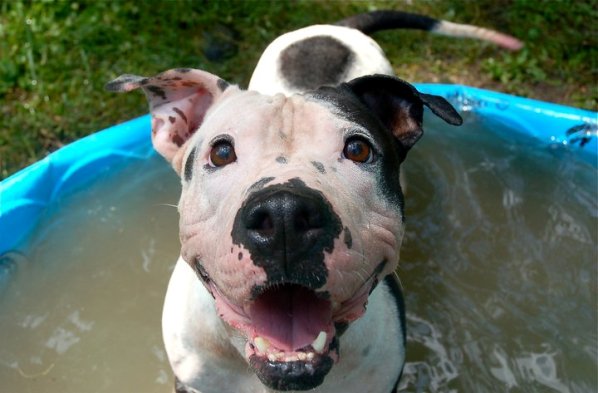
photo of ladybug courtesy DakodaLove Rescue
What exactly does it mean to foster an animal?
Fostering an animal means taking them out of shelter life (where they might
be in danger of euthanasia), and bringing them into a safe home until
someone adopts the animal… taking just one out of the shelter will free up space
for another to have a better chance at adoption. Dogs might leave an
animal shelter with a cold (kennel cough), untrained, badly groomed, and
shy; with some TLC in a foster home, that dog becomes far more
appealing and has a much better chance of being adopted. Foster Dogs in
NYC helps foster “parents” publicize their dogs, along with rescue
groups and shelters who need extra publicity.
Did you see an uptick in the number of responders and successful placements after you started to use the photos?
The increasing amount of readers who visit Foster Dogs in NYC is due to many reasons, one of which being our great photos. Not every rescue group has the time or energy to professionally photograph their dogs, but when they do it can make such a difference. I could not do this without the amazing pet photographers who provide me with photos of adoptable dogs!
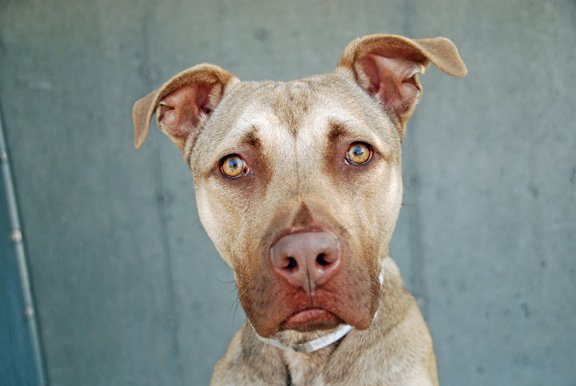
Photo of Max by Paula Rossi
Paula, what are some of the things you do to get your shots?
I think it is very important to know dog behavior and what turns them on – I start by letting them burn off some energy in an outside pen area. I am working with shelter dogs that either come in as strays (no prior information on them) or owner surrenders where we have limited information on the dog. In both situations the dogs are a bit nervous and really need you to be calm and confident and non threatening. Once I feel they have started to relax I start shooting pictures randomly.
When working with shelter dogs you never know who is going to show up. I also work with the larger dogs because it is so much harder for them to find a home or rescue group that will be able to save them. Large dogs are more challenging because of possible behavior issues that can pop up. I do use treats and many of the dogs have been starved – so food can be a issue because they become to focused on it or they will not stay still when food is around. If that should happen I will tether the dog to a kennel and use squeaky toys to get their best expression.
Toto Photo
Joanna Totolici of pet portrait studio Toto Photo gave us some tips on patience, for the subjects… and their owners.
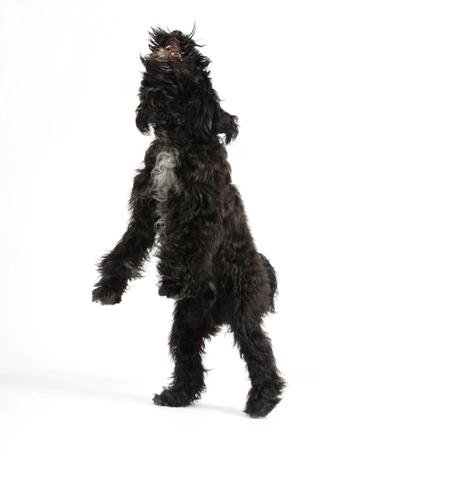
Photo courtesy Toto Photo
What are some of the things you do to get great shots from your subjects?
After asking the owner to take the dog for a long walk before the shoot, then we simply let the dog be itself, well, mostly. We believe the magic of dog photography is to be able to capture their personality, even if they can’t stay still for one moment in front of the camera. Actually, some of those rambunctious pups make for the most interesting images!
You guys are pros, what is in your bag when you go to a animal portrait shoot?
Our arsenal includes a white seamless backdrop, three studio lights, loads of dog treats and squeaky toys, and a LOT of patience.
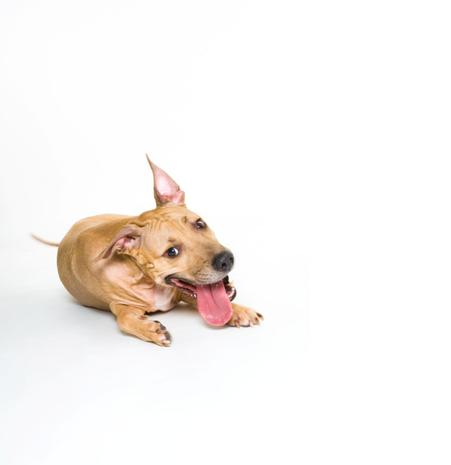
Photo courtesy TotoPhoto
What have some of the more challenging shoot situations been?
Although all of them are fun, sometimes patience is switched to overdrive when photographing the pups that have had no training whatsoever. Sometimes most challenging are the owners, who are far more disobedient than their doggies. We have an extra bag of patience just for them.
Washington Animal Rescue League
Michelle Frankfurter, a veteran documentary and wedding photographer based in Takoma Park Md, got involved with the Washington (DC) Animal Rescue League after volunteering as a dog walker. Her advice to photographers looking to get involved with animal rescue efforts in their community, “Just do it!”
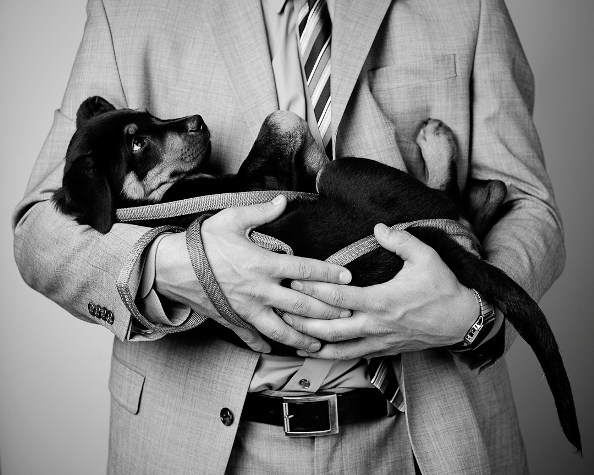
Photo By Michelle Frankfurter
You are a documentary and wedding photographer, how did you get involved with WARL?
I started as a volunteer dog walker. I overheard staff members from the Development office talking about the Rescue Me Gala event held annually at Union Station, and I offered to shoot it pro bono. The event kicks off with a V.I.P cocktail hour followed by a reception in the main ballroom. This is basically what I do for a living: photograph well-dressed people mingling, with the exception of the guests’ + 1 being of the four-legged, canine variety. I just saw an opportunity for making interesting photographs. It was fun and the development staff was extremely happy with the results.
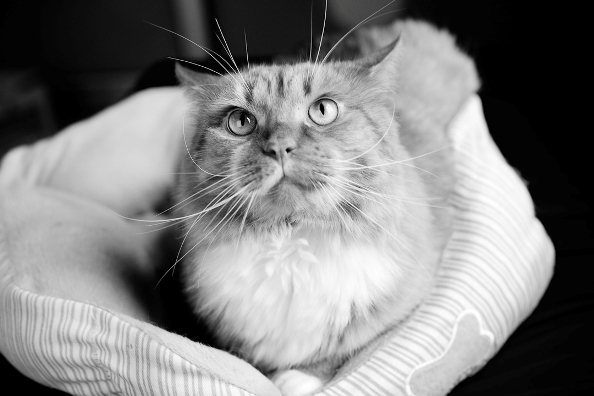
photo by Michelle Frankfurter
What are some of the things you do to get great shots from your subjects?
As when photographing people, I try to work with great light when it’s available. When it isn’t, I create it. Some of the animals were initially afraid of the camera-of having some hairless biped towering over them with this intimidating combination of glass and plastic. So I would get into the dens with them and sit down, not looking them in the eye. I’d let them smell the camera and get used to me, while I petted and talked to them.
What is your encouragement for other photographers looking to get involved with local animal rescue orgs?
Just do it! Most rescue organizations depend on private donations for funding, and in this economy, they are really feeling the pinch. Stop by your local shelter and ask to speak to someone from the development office. Offer to shoot an event, or take pictures for their promotional materiel. At the moment, I’m working on a series of photographs that will be used in WARL’s adoption brochure. This past summer, I spent a couple of days photographing dog and cats for the 2011 calendar. From what I heard, all of the animals I photographed found permanent homes.
WARL is a fantastic organization, and for someone like me who has been self-employed for twenty years, it creates a connection to something beyond my insular world. I get a sense of peace when I’m around the animals. I can feel my blood pressure drop and my breathing become relaxed.
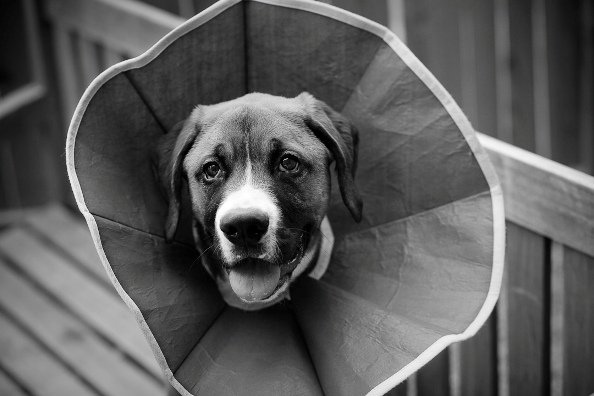
Photo by Michelle Frankfurter
Mark Menditto
*UPDATE: We had a chance to catch up with Mark Menditto of Menditto Photo and get a bit more background on the work he does volunteering and photographing to support NJGAP (The New Jersey Greyhound Adoption Program). We asked him about what it takes to rescue and photograph these unique dogs.
How did you get involved with NJGAP?
My wife and I adopted two greyhounds Biscuit and Cookie from the New Jersey Greyhound Adoption Program (NJGAP) in 1999, rescued at about 2-3 years old. In 2008, at the passing of Biscuit, I wanted to tell the broader story of the breed and the volunteers that save them.
What is it like working with these dogs and how do you get such great shots?
Dogs arrive in customized trailers from rescue groups near the race tracks, having been traveling for at least twelve hours. I tend to settle back and be casual among the animals, so they relax a little. Greyhounds are a very affectionate breed to people, and they’re eager for any affection. My favorite lens for this setting is a 85mm f/1.4, so that I can photograph without strobes that would spook them. The shallow depth of field, I think conveys a little of the emotion of what it feels to be among them.
But most of all, the project is not about the pictures. Rather, it is a story of renewal, the compassion of rescue group volunteers like NJGAP, and the thousands of animals that need foster and permanent homes. The best thing for an observer is to see one of these dogs go home with a foster family and then onto a permanent home.
Carli Davidson
Carli has worked as a reptile, mammal and big cat rescue volunteer, and at the Oregon Zoo. Over the years she has learned a fair deal from working with animal cognition and behavior specialists, she is currently using that experience in her pet portrait photography business. Her quirky pet portraits caught the eye of Grover and earned her a shout out on the blog. A long-time animal rescue volunteer, Calri has chosen to photograph some of the more extreme cases in the shelters she works with, giving the animals who have suffered the most a shot at a new life. We followed up to hear how she approaches her portraiture.

Photo by Carli Davidson
I know you are a pet photographer, how did you get involved with animal rescue photography?
I’m obsessed. My pet photography business grew out of a lifelong work taking care of animals and a love of artistic expression. I grew up across the street from Teatown Lake Nature Reserve in New York and began volunteering before I was 10. I took care of the raptors, reptiles, and mammals, prepared diets, and made cleaning crap an art.
From there I volunteered at a big cat rescue in Michigan, and worked for The Oregon Zoo in Portland, Oregon. I learned operant conditioning (clicker training), worked with some amazing animals and people, and got to know a ton about animal care, behavior and cognition.
I left my animal care position at the zoo after a car accident left me unable to do manual labor during my recovery. I started volunteering frequently as a photographer there so I could still work around the animals. I was very inspired to take up photography professionally again by the zoo staff photographer and fellow Photoshelter user, Michael Durham. He gave me some great ideas about merging animal work and art in my career.Now on a side note, I do have a minor in photography from The Evergreen State College. I’ve worked professionally both as a photographer and an assistant on and off. I love photography, but it’s never trumped my youthful desire to work with dogs, cats, and giant animals that could eat me.
After starting my pet photography business I immediately began looking for rescue organizations to work with. I get some really great photos to show off as a result, and I feel amazing when I get feedback that one of my photos helped spark the interest needed to find an animal a home.
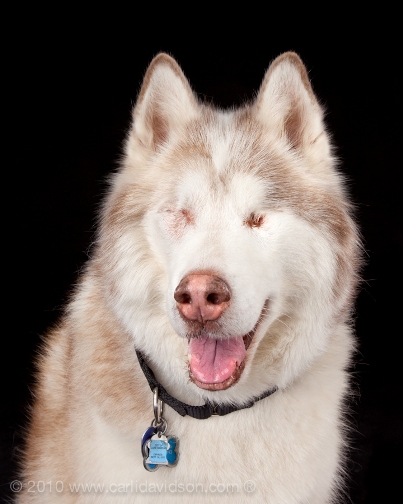
OG is a nine year old siberian husky who just had to have his eyes removed and could no longer be cared for by his owner. I photographed him on a monday, posted him on my Facebook fan page, and he was adopted by the following week by someone who said they saw his photo and fell in love. Below is the picture of him in his new home with his human, Heidi. Photo By Carli Davidson
What are some of the things you do to get great shots from your subjects?
Rescue animals can come with some pretty intense trauma issues. There is a higher rate of skittishness and fear so I use my previous animal care experience a lot. One of the rescues I work with deals primarily with high need and post surgery animals that have become recently disabled or are abuse survivors, without my training background I couldn’t get most of them to cooperate.
I seriously recommend taking an animal training course and reading books on animal behavior if you want to get some great shots of rescue dogs and cats. Some tips I have are to let the animal approach you at their own pace, hold the camera below them to let them sniff it, and then give them treats when they do. Food = Love. A great book about how dogs approach each other that I reference often is Calming Signals by Turid Ruggas.
A persian cat from The Pixie Project, Portland Oregon. Photo By Carli Davidson
You are a pro pet portrait photographer, what do you bring to a shoot?
When I shoot rescues I bring a portable studio set up. It is a little more challenging to make the animals comfortable with strobes but I think the product is a much more ‘sellable’ image. We live in a world of advertising and the sharper and brighter the photo the more likely someone will take the time to meet the animal. I shoot with a 5dMkll. The full frame give[s] me more flexibility if I need to crop the image since I follow the animal and they move constantly. Ninety percent of the time I shoot with a 24-70L 2.8 USM. I usually bring some toys too, and treats of course.
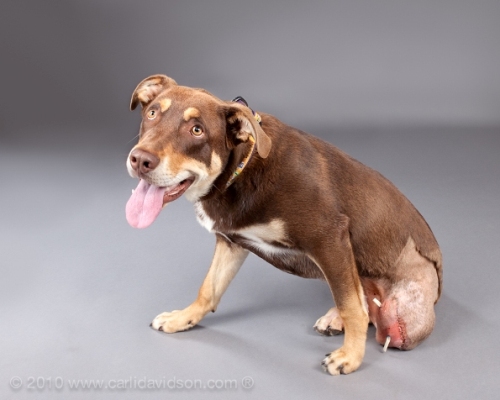
Nacho was relinquished from his owners after a severe car accident left him needing multiple surgeries, and rehabilitation. After seeing Nacho’s photo on the internet a local couple decided they wanted to adopt him. They contacted the rescue, and chose to adopt him even thought he may lose his other leg in the next year. Finding the right home is very important. Other people were turned away after the rescue decided they could not give Nacho the care he needed. Photo By Carli Davidson
What is your advice/encouragement for other photographers looking to get involved with local animal rescue organizations?
My advice would be to find a few organizations that really need the help and be patient with them. Most large rescues like the Humane Society have the resources and money to get their animals adopted at a higher rate then smaller shelters and home run rescues. This is in no way meant to discourage you from the Humane Society if they need the help… but I’m a fan of the underdog (no pun intended ).
Something to keep in mind is that rescues often rely heavily on volunteers who are only there one or two days a week. If you call an organization and don’t hear back, the message may have been lost. Call again and try to speak with a employee to set up a shoot.
Be really clear about what you need from them and what they are getting from you. I will do a shoot, personally pick and edit one image from each animal, and then give them a digital file to use for the adoption of the animal. I shoot as needed for 3 organizations in Portland, but they are small so this is only about two 2 hour shoots a month. If you shoot for a larger rescue be sure you agree on time and energy spent so you don’t burn out and so there aren’t unrealistic expectations.
OG and his new adoptive family. Photo By Carli Davidson
* We had an overwhelming response to our request for submissions for this story, so wanted to mention a few more photographers who are working to help animals in their community and beyond:
Shane Srogi has uses his photography to support Almost Silver Ranch a horse rescue based in South Florida that was started, and lovingly kept alive, by his mother Gretchen Augusti for 15 yrs.
photo by Shane Srogi “… Horses live for decades and taking them in is a long term commitment. Social networking has made me realize that there is a good degree of interest from my pictures and posts of ranch life… What I can do and have done in the past with other causes is offer prints and a book for sale with the proceeds going to the care and feeding of the horses... it’s a sustainable model.“
“… Horses live for decades and taking them in is a long term commitment. Social networking has made me realize that there is a good degree of interest from my pictures and posts of ranch life… What I can do and have done in the past with other causes is offer prints and a book for sale with the proceeds going to the care and feeding of the horses... it’s a sustainable model.“
Diane Askew of Caswell & Askew Studio based in Sonoma has supported local animal rescue efforts through her photography for years.
Photo by Diane Askew “...I approach each session as if I have been hired to take a pet’s portrait; I want the photo to bring out the personality of the animal and I want it to be flattering. I don’t want a mug shot or “caught in the headlights” expression. Really, I am motivated to do whatever it takes to get a great photo of each animal because I know how critical it is to the animal’s well-being… There is no greater feeling for me than to find out that a shelter animal found a new home because of my work.”
“...I approach each session as if I have been hired to take a pet’s portrait; I want the photo to bring out the personality of the animal and I want it to be flattering. I don’t want a mug shot or “caught in the headlights” expression. Really, I am motivated to do whatever it takes to get a great photo of each animal because I know how critical it is to the animal’s well-being… There is no greater feeling for me than to find out that a shelter animal found a new home because of my work.”
photo by Brian Gryphon “Learning as much as I can about different breeds, and taking the time to watch each animal’s natural behaviour, are the keys to determining how to capture images that reflect their unique character.”
“Learning as much as I can about different breeds, and taking the time to watch each animal’s natural behaviour, are the keys to determining how to capture images that reflect their unique character.”
A big thank you to everyone who contributed to this article. Please share your own stories, and links, in the comments below and help spread the word about animal rescue organizations and photographers doing good work out there.


